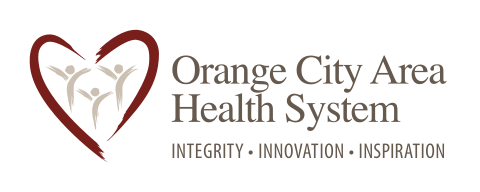Over 1,800 mammograms done this past year
Orange City Area Health System (OCAHS) was adorned with pink throughout the month of October as it observed Breast Cancer Awareness Month. October also marked the one year anniversary of offering full-field digital mammography to the women in Northwest Iowa.
According to the National Cancer Institute, both digital and film mammography use X-rays to produce an image of the breast. While standard film mammography is very good, it reports, it is less sensitive for women who have dense breasts. Prior studies have suggested that approximately 10 percent to 20 percent of breast cancers that were detected by breast self-examination or physical examination are not visible on film mammography. A major limitation of film mammography is the film itself. Once a film mammogram is obtained, it cannot be significantly altered; if the film is underexposed, for example, contrast is lost and cannot be regained. Digital mammography takes an electronic image of the breast and stores it directly in a computer. Digital mammography uses less radiation than film mammography. Digital mammography allows improvement in image storage and transmission because images can be stored and sent electronically. Radiologists also can use software to help interpret digital mammograms.
“The increase in image quality with digital mammography is dramatically improved,” reports OCAHS radiologic technologist Lynn Glasser. “The visibility of small calcifications is far superior to film.” Lynn also reiterates that digital mammography reduces patient radiation dose up to 30 percent.
Gloria Zylstra is a testament to digital screening mammograms. “I went in for a routine mammogram this spring,” she says. “I did not expect to find anything abnormal. I had no history of breast cancer in my family. I did not feel any lumps. I felt great.” According to Gloria, a spot showed up on the mammogram. She went back (to OCAHS radiology/diagnostic imaging) for follow-up testing, and it was positive for breast cancer. “Can I positively say that this would not have been found without digital mammography?” she says. “No, but I do know it was found and was able to be treated in its very early stages.”
Over 1,800 mammograms are performed annually at OCAHS. Mammography is one tool in the fight against breast cancer. The health system offers a continuum of care in the diagnosis and treatment of breast cancer, including stereotactic breast biopsy, breast cancer surgeries, sentinel lymph node biopsies, and chemotherapy. Zylstra, a registered nurse, works in the chemo department at OCAHS.
“I am thankful to the radiology department,” says Zylstra, “for their care and professionalism in offering digital mammography.”
More information can be found at ocHealthSystem.org.
